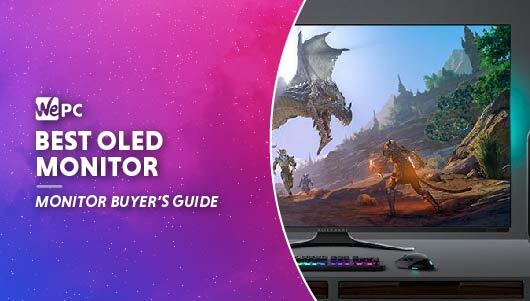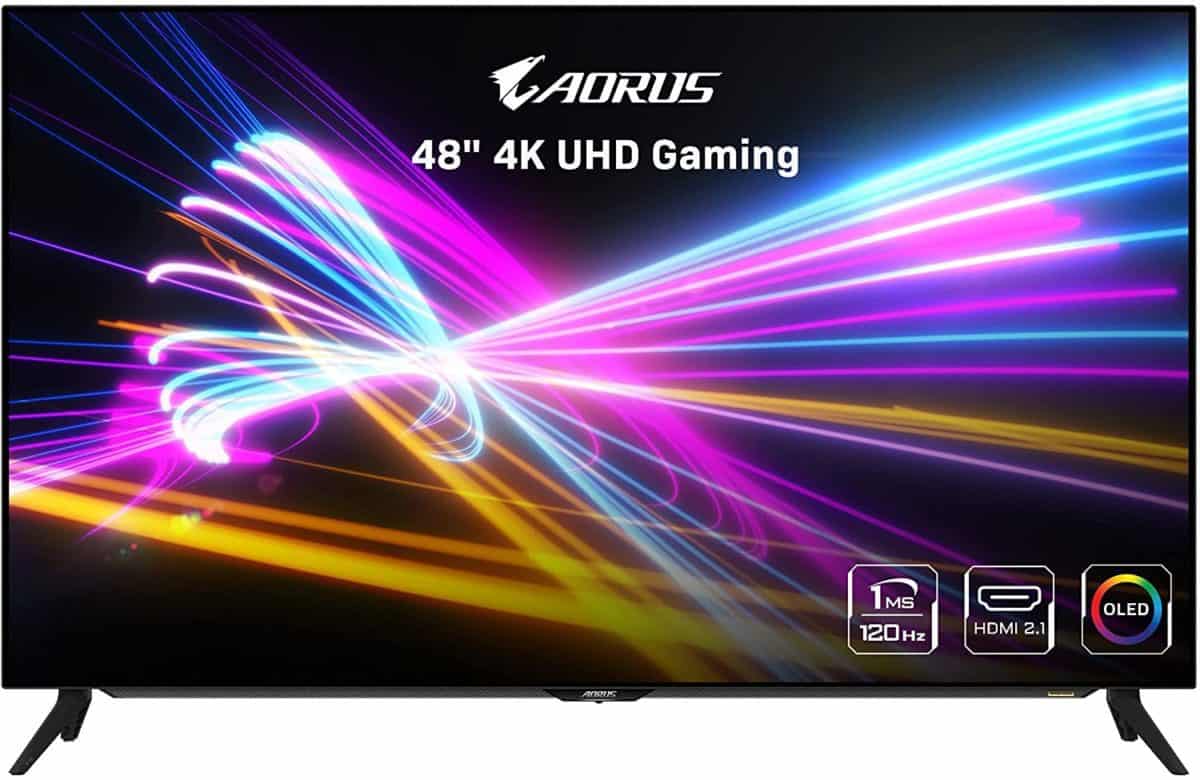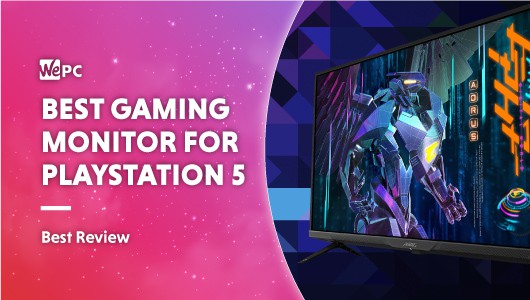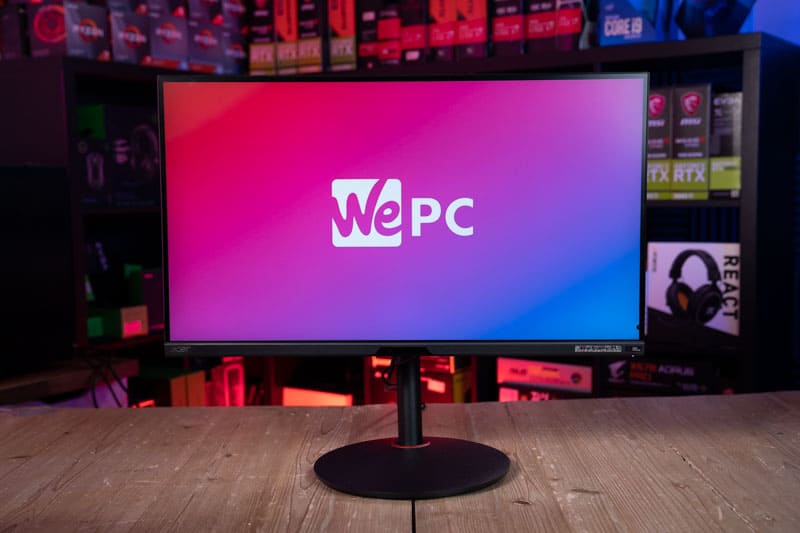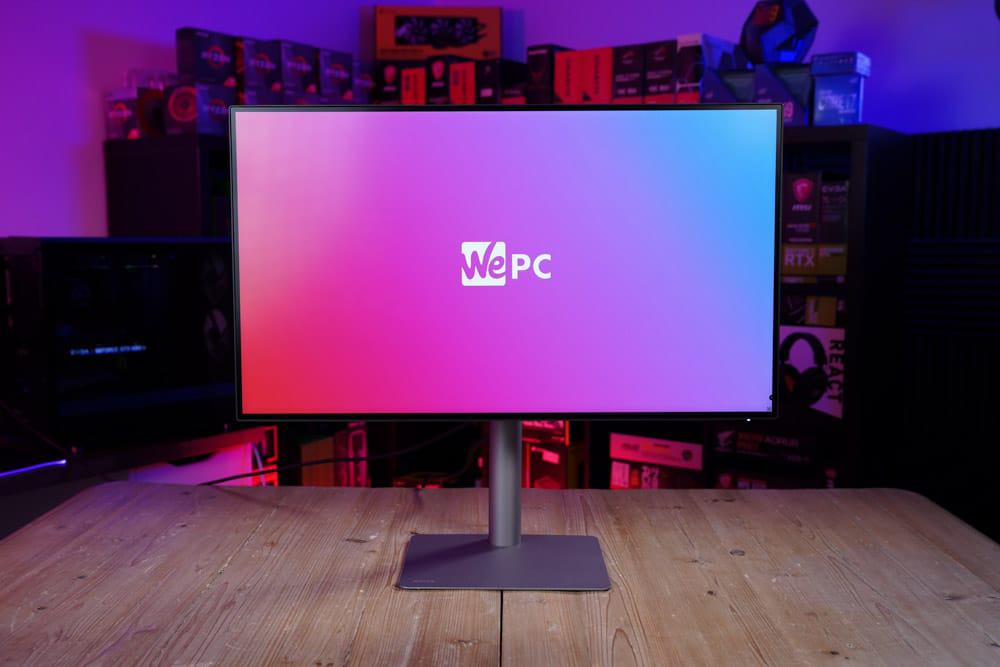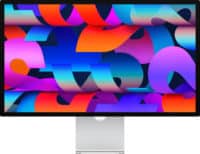Latest OLED monitor news
With OLED monitors becoming more imminent by the day, we’ll be keeping you up to date with all the latest news right here.
- PS5 say VRR support is on the horizon
- Samsung announces S95B QD-OLED TV
- LG c2 42 inch perfect choice for gamers
- LG c2 OLED TV announced
- LG launches its first OLED gaming monitor
- ASUS unveils new OLED 42/48″ monitors
- Skyworth release G90 48″ OLED Monitor
- Details of Gigabyte’s 48″ OLED gaming monitor emerge
How We Test & Choose
Despite OLED monitors being fairly sparse in today’s market, we’re still bang up to date with the latest news regarding the technology. With few monitors to choose from that actually support this exciting backlight technology, it wasn’t too hard picking the best of the bunch available today. However, as time goes by and more OLED displays become available, we’ll be running our own in-house tests to see which is truly best.
For this article, we’ve rounded up the best OLED monitors, researched them meticulously, and have concluded with the following list as our best.
Things To Consider When Purchasing An OLED Monitor
Like all hardware purchases, buying an OLED monitor comes with a whole host of secondary considerations. Unlike more generic monitors, OLED monitors offer unique factors that may (or may not) make them suitable for your PC setup.
For that reason, we’ll go over some of the main factors that you should be aware of before buying an OLED gaming monitor.
Here’s the most important:
Price
If it wasn’t obvious, OLED monitors are much more expensive than LED alternatives. Even the most expensive 4K 144Hz gaming monitors don’t land a glove on the price of OLED alternatives. Part of that is due to the fact that OLED is still in its early stages. Once the technology becomes more widespread, chances are the costs will reduce exponentially.
OLED Burn-In
Unfortunately, all OLED monitors suffer from the risk of permanent burn-in. This is when your monitor displays a static image for too long, resulting in the degradation of pixels in the form of permanent retention. There is no fix for this drastic flaw, meaning if you aren’t careful, you could easily ruin your brand new – and extremely expensive – OLED monitor.
Response Time
As OLED doesn’t necessarily have a backlight – like LED – pixel response time is drastically improved. Whilst the best gaming monitors can only dream about 1ms response times over the entire spectrum of transitions – the same can’t be said for OLED. They can easily breach 0.5ms response times, with many offering almost instantaneous results.
For gamers, this means zero ghosting, crystal clear image quality, and great immersion across the board.
HDR Performance
For those that appreciate a great 4K HDR monitor, chances are OLED will revolutionize your gaming experience. OLED panels offer incredible HDR performance, mainly because they can turn off individual pixels completely. This results in inky blacks that really do looks sensational.
OLED Vs LED
So, how does OLED compare to the ever-popular LED/LCD monitors that most of us are so used to? Well, we’ve touched on a few areas above, better picture quality, higher contrast ratios, quicker response times, and higher refresh rates which are all fantastic pluses for the OLED. However is there any downside to the organic counterpart? Below we’ve made a table to display everything you need to know about OLED and LED and how they compare.
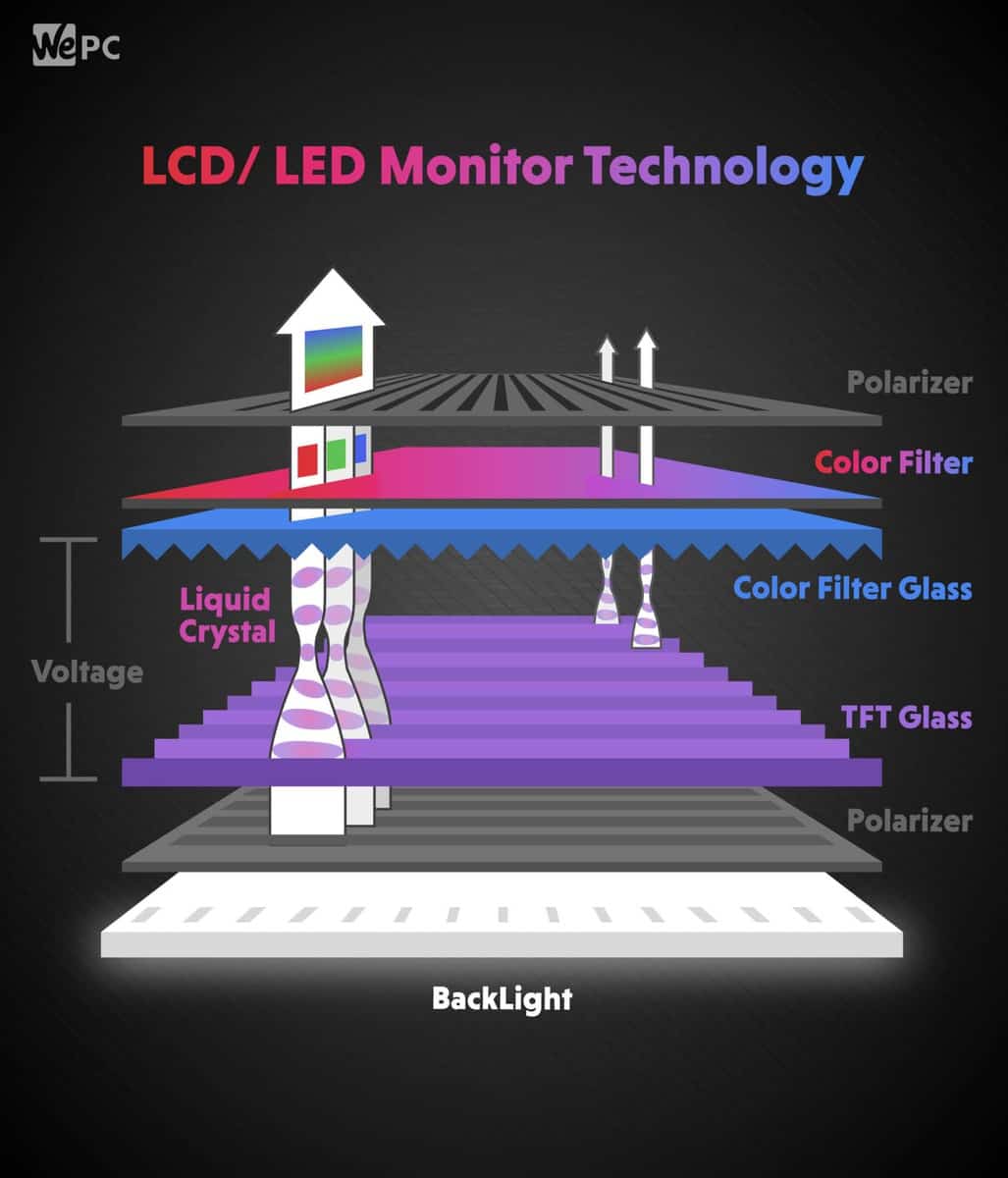
OLED
- Pixel Light Source: self-emissive
- Luminous efficiency: medium
- Luminance: >500
- Contrast: high
- Power consumption: medium
- Operating temp: -30 to 70
- Flexibility: high
- Lifetime: medium
- Price: high
LED
- Pixel Light Source: backlight and color filter
- Luminous efficiency: Low
- Luminance: >3000
- Contrast: medium
- Power consumption: medium
- Operating temp: -20 to 80
- Flexibility: low
- Lifetime: high
- Price: low
Upcoming OLED monitors
Modern gaming monitors are evolving at an exponential rate, with 2022 playing host to a tonne of high-performance OLED monitors.
In this section, we’ll be looking at all the most anticipated OLED gaming monitors that are due for release this year. Once released, these monitors will make their way into the top recommendations – where we will perform full in-depth reviews of all.
- LG 48GQ900 OLED monitor
- Dell Alienware AW3423DW QD-OLED monitor
- ASUS ROG Swift PG42UQ OLED monitor
- Acer Predator CG48
- Samsung Odyssey G8QNB
Best OLED Monitor In 2022: in-depth review

Gigabyte AORUS FO48U
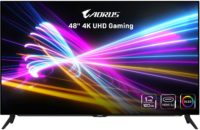
Refresh Rate
120Hz
Response time
1ms
Screen size
48″
Resolution
3840 x 2160
- Stunning visual experience
- Quick response time
- 120Hz refresh rate
- Fantastic aesthetic design
- Very high price point
Our number one OLED monitor goes to the hugely popular Gigabyte AORUS FO48U – a 48 inch gaming monitor that looks to bridge the gap between a generic monitor and TV.
This large-screen gaming monitor features a UHD OLED panel at its heart, delivering superb contrast and HDR performance. Of course, like all the OLED monitors in this guide, the FO48U also offers perfect blacks and stunning colors right out of the box (equivalent to 130% sRGB/ 98% DCI-P3).
Gigabyte has equipped the FO48U with a 120Hz refresh rate and HDMI 2.1 support, allowing the FO48U to take full advantage of next-gen console performance. Both the Xbox Series X and PS5 will be able to run 4K gameplay @120Hz on this monitor. VRR technology is on offer here as well, great news considering Sony’s latest announcement regarding PlayStation 5 and VRR.
Motion handling of this gaming monitor is also excellent, with a low average response time. Better yet, unlike similarly sized TVs, the FO48U comes with a fully versatile OSD that allows total control of the monitor’s picture quality and response time. Inputs for this panel also include DisplayPort and a number of USB ports, great for individuals that own multiple devices. Like TVs, however, the FO48U doesn’t feature any stand adjustments – lacking even the most basic tilt and swivel functionality.
Overall, you can’t really argue with this monitor – it really does excel on all fronts.
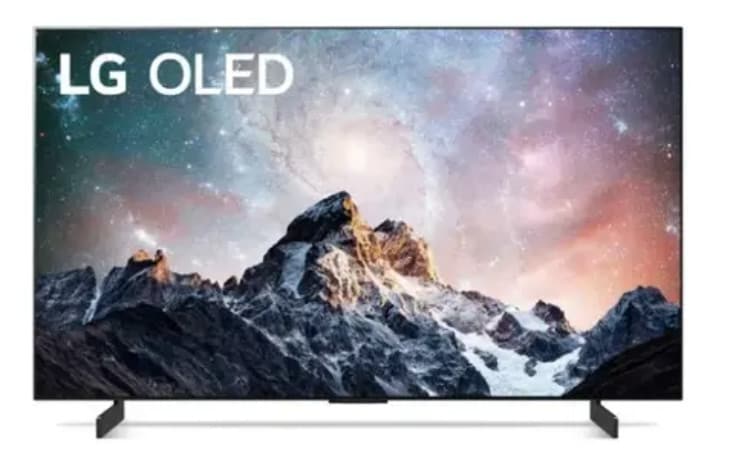
Sizes
42″, 48″, 55″, 65″, 77″ 83″
Resolution
4K Ultra HD 3840 x 2160p
Display Technology
OLED
Panel Type
WOLED
- High 120hz refresh rate
- 0.1ms response time
- Incredibly picture clarity and quality
- HDMI 2.1 support
- Limited adjustability
Whilst this isn’t strictly a gaming monitor, it does still offer a stunning OLED panel and can be used for PC gaming. That said, LG’s C2 series in one of the best out there for gamers – bringing a whole host of exciting features and specifications to the table. It comes equipped with a fast 120Hz refresh rate, stunning 4K screen resolution, and HDMI 2.1 support as well – making it a stellar choice for PC and console gamers.
Aesthetically, the LG C2 is stunning from all angles. However, one area where it does fall short is adjustability. Granted, this is a 55-inch TV and you probably won’t need to adjust it – that said, if you do need to move re-adjust this thing for desk usage, you won’t be able to. Obscure scenarios aside, gaming performance on this TV is fantastic, allowing console gamers to relish in 120Hz gameplay at 4K UHD resolution. Ghosting and screen tear will be to a minimum thanks to a blistering combination of 0.1ms response time alongside VRR support.
While colors for this TV are excellent, some post-calibration is required to bring the accuracy up to a mark that is deemed acceptable for color-accurate editing work. That said, the LG C2 does look fantastic whether you’re viewing HDR or SDR content.
Best of all, this TV showcases excellent value for money – undercutting many of the other options in this guide.

ASUS ProArt PQ22UC
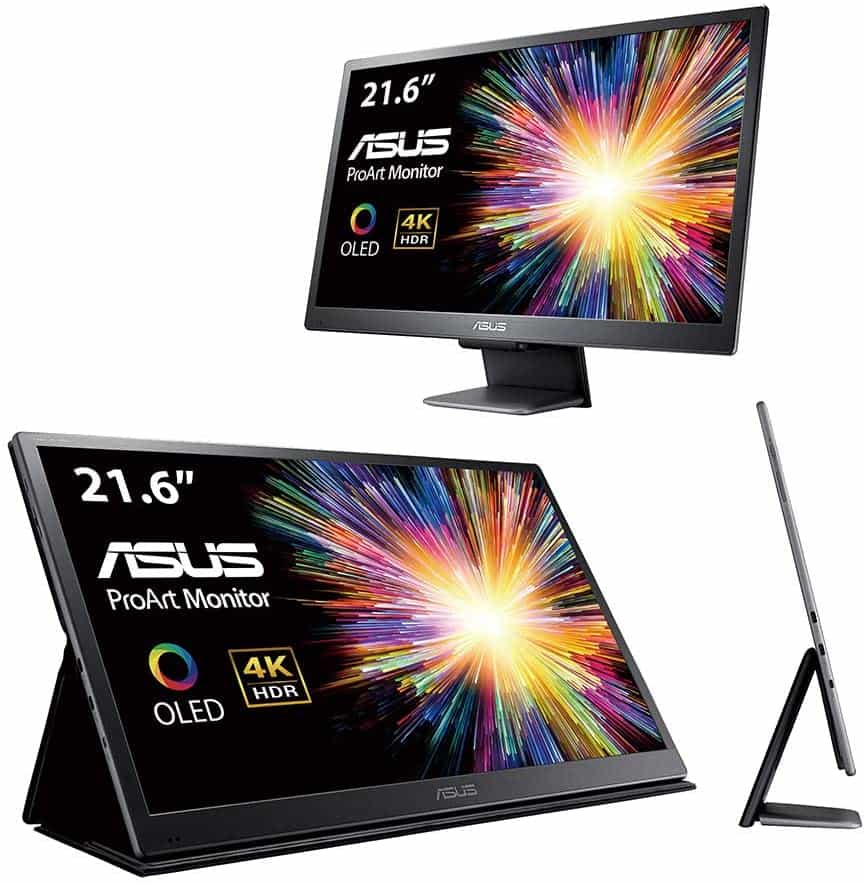
Refresh Rate
60Hz
Response Time
0.1ms
Size
22″
Maximum Resolution
3840 x 2160
Panel
OLEd
- Compact design
- 4K screen resolution
- USB Type-C support
- Low 0.1ms response time
- Very high price tag
The smallest monitor on this list goes to the ASUS ProArt PQ22UC, measuring in at 21.6 inches. Whilst that is a fairly small OLED display, it still packs a punch and offers excellent performance in gaming scenarios. Like most OLED monitors, the PQ22UC offers a wide color gamut that spans the DCI-P3 spectrum alongside side 10-bit color depth and 4K resolution at 204 PPI.
The 0.1ms response time this monitor boasts makes this a great choice for gamers or entertainment viewers alike. With this pixel response speed, users will not experience annoying screen artifacts like ghosting or smearing – often the case with slower alternatives.
Whilst 21.6″ will be a little small for some gamers, it’s the perfect size for editors who want a smaller alternative to their main panel. It also makes for a great browsing monitor, offering a closer size to a laptop than a PC monitor.
One of the major downsides to this monitor is the huge price tag it comes equipped with. Not everyone will be able to afford this, but those that can will enjoy its performance.

Viewsonic ELITE XG550
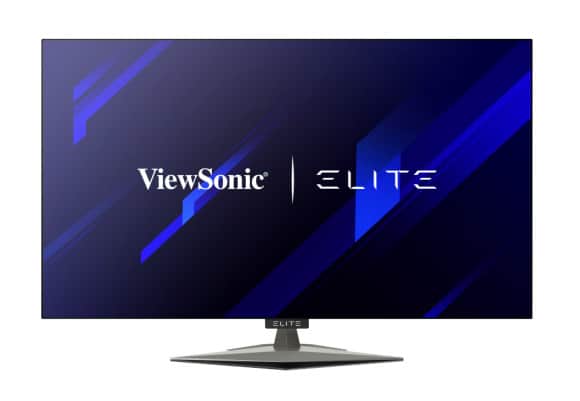
Refresh Rate
120Hz
Response Time
0.5ms
Size
55″
Maximum Resolution
3840 x 2160
Panel
OLED
- Large immersive screen size
- Excellent contrast ratio
- Great peak brightness
- Excels in gaming scenarios
- Estimated high price point
Lastly, we have the Viewsonic Elite XG550 – another large-screen gaming monitor. Like the Alienware, the Viewsonic XG550 is 55-inches in size and offers very similar specifications. This is the newer of the two panels, also coming to the table boasting a 120Hz refresh rate, low response time, and stunning color accuracy – as you’d expect.
At the time of writing this, we’re not 100% sure what VRR this monitor will support – however, if other models are anything to go off, I would imagine FreeSync would feature – with G-sync compatibility. The XG550 offers an incredible HDR experience thanks to per-pixel local dimming – or OLED for short. The 120Hz refresh rate makes gaming feel very slick and lucid, pairing nicely with the low response time which reduces ghosting and smearing.
The price of this monitor is unknown right now, but if the other OLED panels are anything to go off, I presume it’ll be in the thousands. That said, the Viewsonic does offer some nicely placed RGB – so that may end up swaying your decision!
OLED monitor: FAQs
Will OLED Be Worth The Investment?
The big thing with OLED is the price tag, how can anyone justify spending over $3000 on a monitor when their build may only be between $500-$1000? It’s just not practical and the main reason why many of today’s OLED monitors didn’t take off. However, with the advancements in technology moving faster than ever, I believe it’s only a matter of time before OLED starts to become affordable to the mass market.
Are OLED Monitors good for gaming?
Yes, OLED monitors are a fantastic option to use for gaming. This is because they have a particularly high refresh rate in comparison to other types of monitors. When it comes to gaming a higher refresh rate is something that is essential in a monitor.
What is great about OLED monitors is that they display fantastic and crisp images. The colors are bolder in comparison to other types of monitors, and the refresh rates average at around 120 Hz, which is great.
The only issue that can have a negative impact on gaming is that OLED monitors can suffer from burn in. This is when the images on the screen are retained, and begin to affect game play. This can be very frustrating to experience.
Why are OLED monitors so expensive?
One of the main reasons why OLED monitors are so expensive is that they are not mass produced in the same way as standard monitors. As they are less produced, these monitors tend to hold their value.
In addition to this, they have particularly high resolutions and refresh rates. When a monitor has higher specifications, they will be more expensive to purchase. This technology is also fairly new in comparison to other types of monitors.
As with any piece of technology, the newer it is, the more expensive it will be. As more of these monitors are produced, they will become less expensive over time.
OLED is a type of display that is very commonly used for phones. However, it is not typically used to create larger screens, mainly due to how expensive it is to be produced. Even so, there are types of monitors and TVs with this display.
Can OLED TV be used as computer monitor?
Yes, on a technical level you can use an OLED TV as a computer monitor. However, it is typically not recommended to use an OLED TV. This is due to a number of reasons.
The first reason is the refresh rate. The refresh rate of a TV is typically lower than that of a monitor. Even though OLED TVs have a good refresh rate, it is still likely lower than a monitor. Therefore, it is unlikely going to be the best option.
If you want to use an OLED TV as a computer monitor, you will also need to take into consideration the size of the screen. If you are looking to use a large TV, this is not the best option as the resolution of the image displayed will not be fantastic.
However, if the OLED TV screen is smaller, it can be a great alternative to a monitor.
Is IPS better than OLED?
It is down to personal preference when it comes to which is better, IPS or OLED. Both are fantastic display options. They both produce fantastic images that are clear and crisp.
IPS uses a liquid crystal display, and OLED is a light-emitting diode. They both produce a fantastic contrast, and greatly enhance the images. However, overall OLED screens do tend to have the edge over IPS.
This is because the OLED screen displays stronger colors, and the angles produced are clearer. While IPS is a fantastic option the pictures are slightly dulled in comparison. Though, it is worth noting that this difference is very minimal, and both are fantastic options to use for gaming.
When it comes to the amount of power each uses, OLED screens are better on the whole, they are also thinner, which is another great advantage. Overall, OLED does take the top spot, but only just!
Why are there so few OLED monitors?
The main answer is, the technology is still incredibly new when it comes to the gaming monitor marketplace.
While OLED has been used in TVs for years now, the same is most certainly not the case for gaming monitors. Furthermore, with OLED premiums raising monitor prices exponentially, many manufacturers don’t offer OLED monitors as they believe the market for them is fairly small.
Final Word
So, there you have it, our comprehensive look at the best OLED monitors for 2022. Whilst there aren’t a tonne of options to choose from, we were still able to sniff out four high-quality panels that tick all the right boxes. In the coming months, we’ll be keeping this page up-to-date with all the latest OLED monitors, so check back if you’re serious about these panels.
Any questions, feel free to drop us a comment in the section below.

